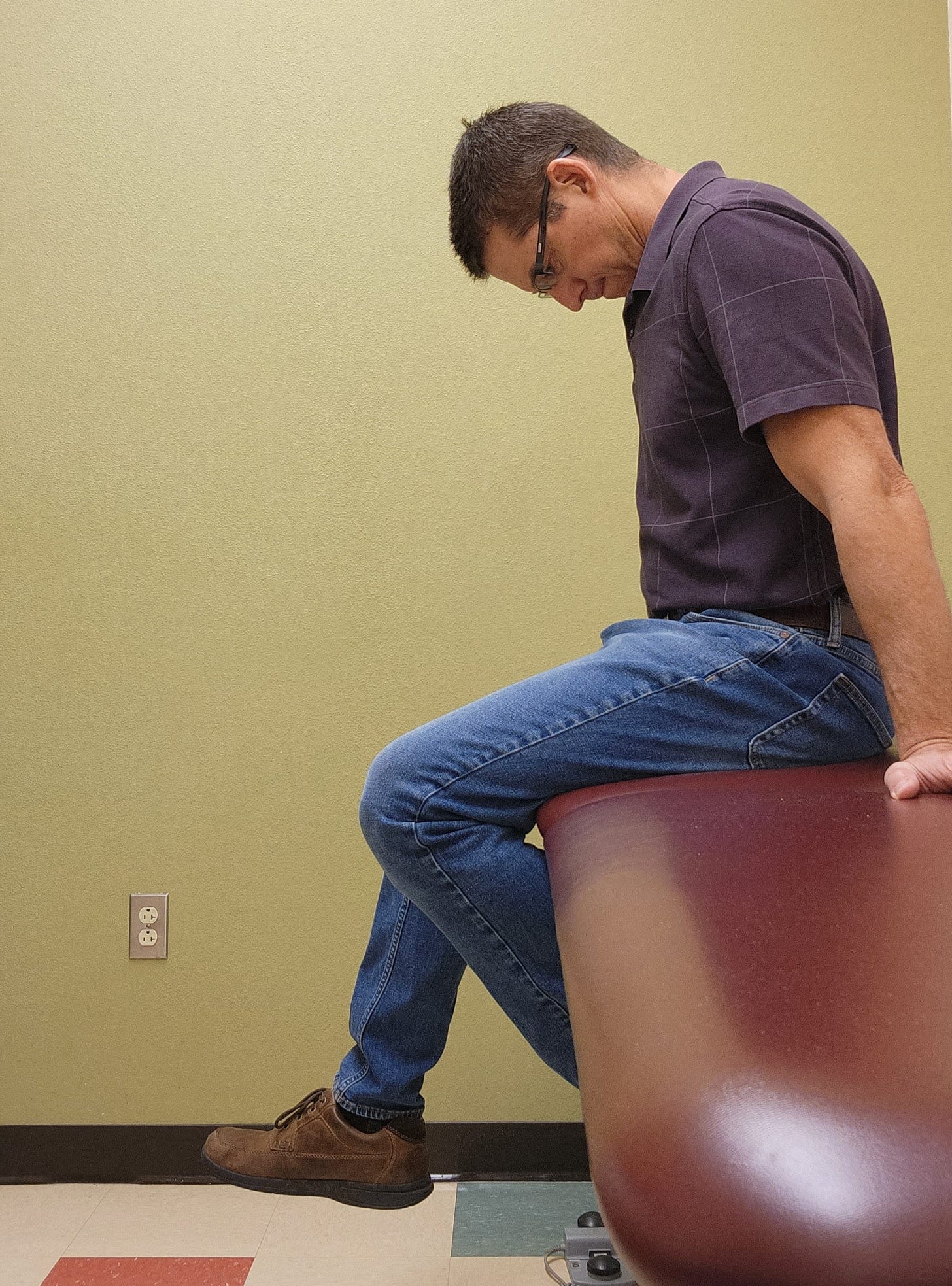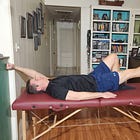This is not medical advice.
Stenosis is narrowing of the canal or exits from where spinal nerves travel. It can be caused by several different issues, including osteoarthritis. The reason OA contributes to stenosis is a malformation of the vertebrae. The vertebrae are similar to stacked blocks. Once the blocks deform in shape, the column starts to collapse.
Nerve flossing is a theory that if we move with a certain pattern, we can floss the nerve tissue through the narrowed openings, and possibly decrease pressure on the nerves.
Stuart McGill has a certain protocol for this which I think is the correct model. We don’t want to stretch the nerve tissue, that would just irritate the nerves more. Picture the word flossing just like we do with our teeth. It’s the same motion.
The easiest direction for this maneuver is, “you shouldn’t be able to see your foot.” If I can see my foot, then I am stretching the nerve tissue, not flossing it. If we pulled on both ends of tooth floss, we would be stretching the string.
The wrong way
I think the flossing I was taught years ago was actually stretching the nerves. I purposely did not provide a picture of it, because many of us skim through pictures without reading (me included).
The nerve flossing (stretching) I was taught years ago involved lying on your back, one leg straight up in the air, flex the neck and look at your ankle and move the ankle back and forth.
Problem is, every time the foot comes towards you with a flexed neck, then you were stretching the nerve. This posture also mimics a test for low back pain called the straight leg raise. Curious that we diagnosed back pain with this maneuver, and then prescribed it as a fix for the pain (?)
Problems with nerve flossing
In theory I think this maneuver can help decrease symptoms related to stenosis. Many people think that if they feel nothing, then it’s doing nothing. If you feel symptoms completing this maneuver, then you are stretching the nerve roots.
The issue of coordination is also a problem. Many people are unable to flex their neck, knee and ankle at the same time, and then all the opposite at the same time (like the pictures). It take practice, without irritating the back, and frequency. If this is going to work, people need to spend time doing it.
The big picture
While I think that nerve flossing may help decrease symptoms associated with stenosis, I have seen far greater success following the McGill protocol of gentle and pain free, progressive core stabilization. I lay out the case for that here;
At the bottom of that article is a link to a progression of exercises.







I like McGill's stuff. I don't know what I feel about the flossing in principle. Have you found it effective ? Stenosis has definitely been a big issue with my older guys. But as soon it's got to the stage of pain, with the radiating pain, they will opt for surgery very quickly.
The problem is then what happens after the surgery. There are often complications and a lot dissatisfaction from these back surgeries. Some post-surgery problems may resolve on their own and some of them don't. While the pain has been fixed there's now new problems the person has and a high chance of more surgeries to try to fix these problems.
Back surgery is like a Pandora's Box, it's opening the door to something you really don't want to. But I can see limits to conservative treatment too. I would be interested to read about people who have got on with conservative treatment with stenosis and actually avoided surgery.
https://open.substack.com/pub/mikeshomeexercise/p/youre-a-pain-in-the-neck?r=17pv2u&utm_campaign=post&utm_medium=web
Assuming you are talking about your neck? Thanks for reading.